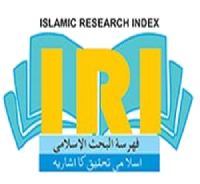اسلامی تصور اخلاق میں معاشرتی ماحول اور زمام کار کی اہمیت: ایک تجزیاتی مطالعہ
An Analytical Study of the Importance of Leadership and Social Values in the Islamic Concept of Morality
Keywords:
social atmosphere, leadership, spiritual aspect, desires, morality, Ethical valuesAbstract
This study examines the pivotal role of leadership and social values in shaping moral character within the Islamic framework. Islamic morality is rooted in the concept of khilafatullah (vicegerency of God) and ashraf-al-makhlookat (the crown creature), which emphasizes the importance of ethical values in human life. The research explores the Islamic perspective on morality, highlighting the significance of leadership, social atmosphere, and spiritual growth in fostering a morally upright individual.
The study draws comparisons with Western philosophical traditions, particularly the Greek philosophers' rational approach to ethics. In contrast, Islam offers a balanced path that considers worldly fluctuations and emphasizes progressive action. The Prophet's teachings in Islam connect apparent morality with human intention, and the environment and leadership play critical roles in shaping an individual's morality.
The research also investigates the golden age of Islam, where high moral standards flourished, and the impact of leadership on moral development. The study analyzes the challenges faced by Islamic leaders, including the Banu Ummaya and Banu Abbas Caliphs, who were compelled to implement Islamic rites due to public demand.
The findings of this study highlight the importance of leadership and social values in promoting moral growth and development in individuals and society. The Islamic concept of morality, with its emphasis on emulating the attributes of the Creator, offers a unique approach to ethics that can inform and enrich contemporary discussions on morality.
Downloads
Published
How to Cite
Issue
Section
License
Copyright (c) 2024 Nuqtah Journal of Theological Studies

This work is licensed under a Creative Commons Attribution 4.0 International License.
This work is licensed under a Creative Commons Attribution 4.0 International License.




